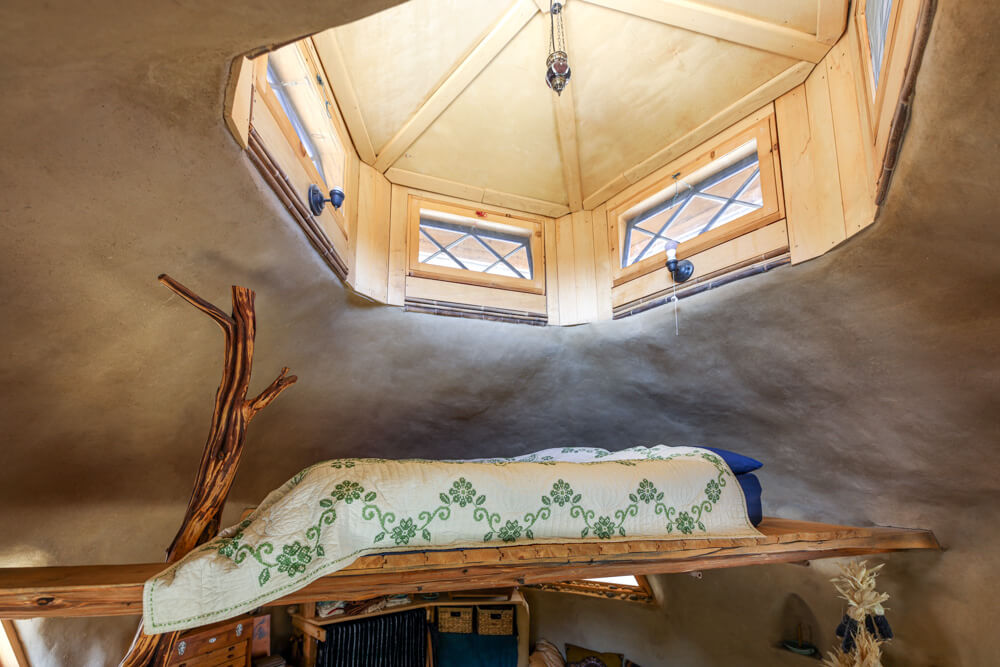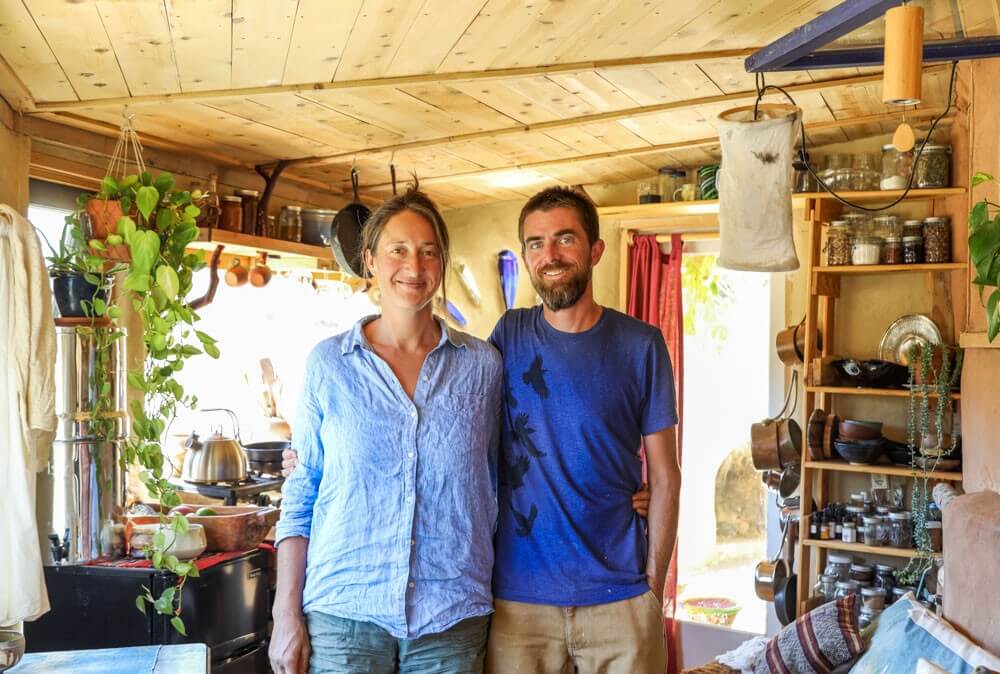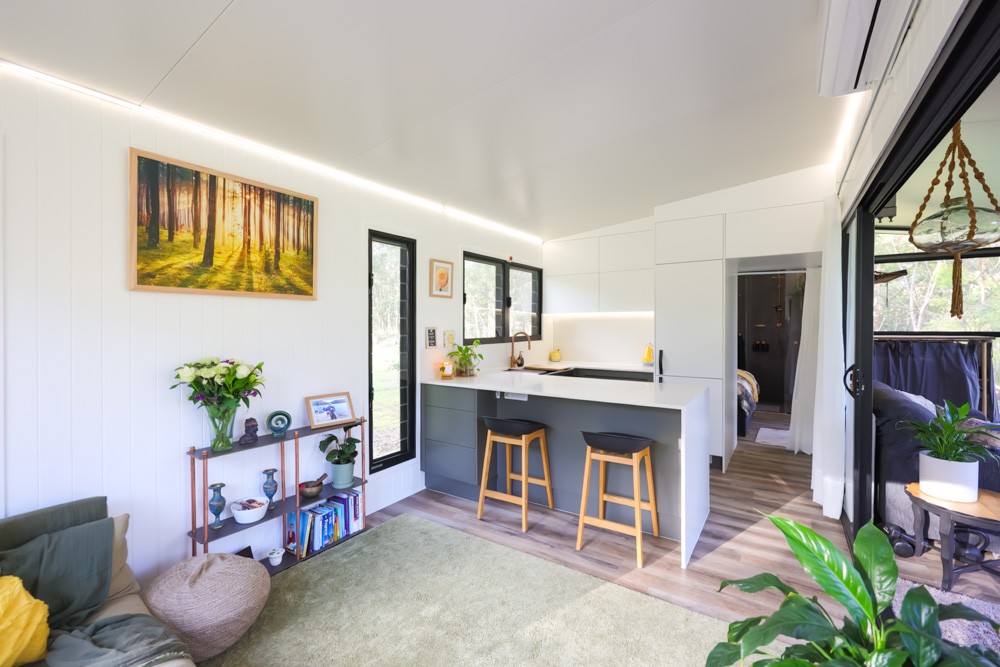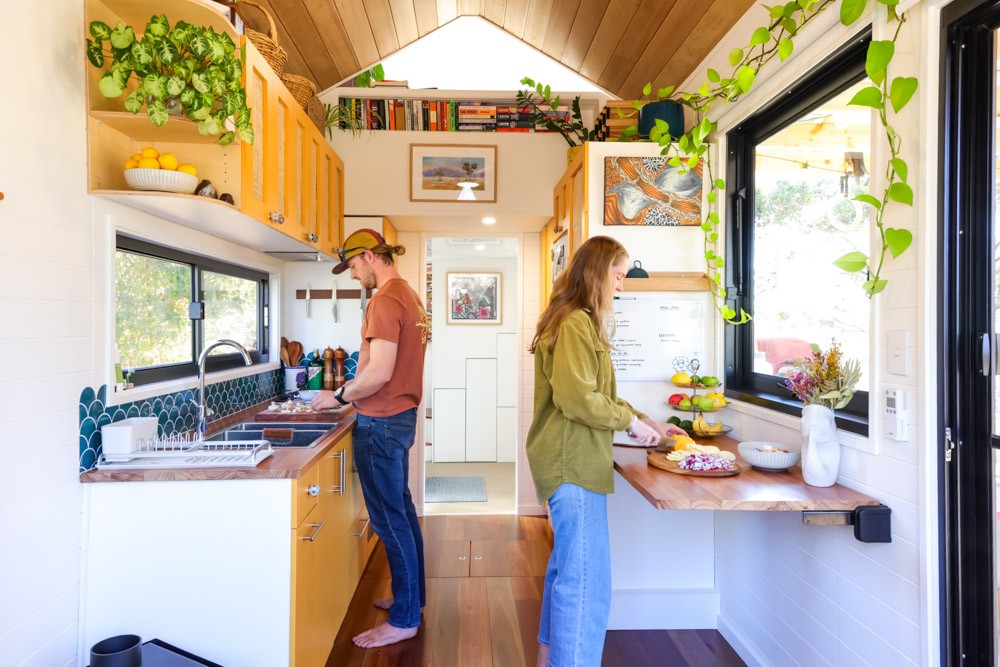Off-The-Grid Desert Living in a Tiny Earthen Home & Permaculture Community
There’s something magical about the desert. The harsh landscape can be a quick reminder of both the fragility and resilience of life and a stark reminder of our own connection with and reliance on nature and all that it provides for us. In this weeks episode, we travel to the desert of California to meet Sasha and John, earth builders at the Quail Springs Permaculture community and talk with them about their beautiful tiny earthen home.
Earth building is perhaps one of the most versatile construction methods and we see successful earthen homes in many different climate areas. Their construction and thermal mass make them especially well suited to harsh environments where they are able to insulate us well against both the cold and excessive heat. In the case of desert living, it’s important to have a place which is able to remain cool in the summer, and which can easily be warmed in the winter. The thermal mass of an earthern home allows the temperature to be well regulated.
This tiny earth house has been constructed around a geodesic structure, and overlaid with a variety of different earth building techniques, such as cob, wattle and daub and earth bag construction. As natural builders who often run workshops, this home was an opportunity to test out some experimental concepts and show off what was possible with earth building.
Sasha and John’s home is one of a variety of natural homes and small structures which have been constructed to form part of the Qauil Springs permaculture community. Situated on over 400 acres of land and surrounded by the Los Padres National Forest, the permaculture community is home to educators, farmers, natural builders and people who are dedicated to regenerative living.
Be sure to check out the full video tour of this very special natural home (above). To find out more about Sasha and John’s work, you’re able to visit their website. The couple are also working to help legalise earthen home’s in California, to find out more about this and to help support their efforts, click here.




